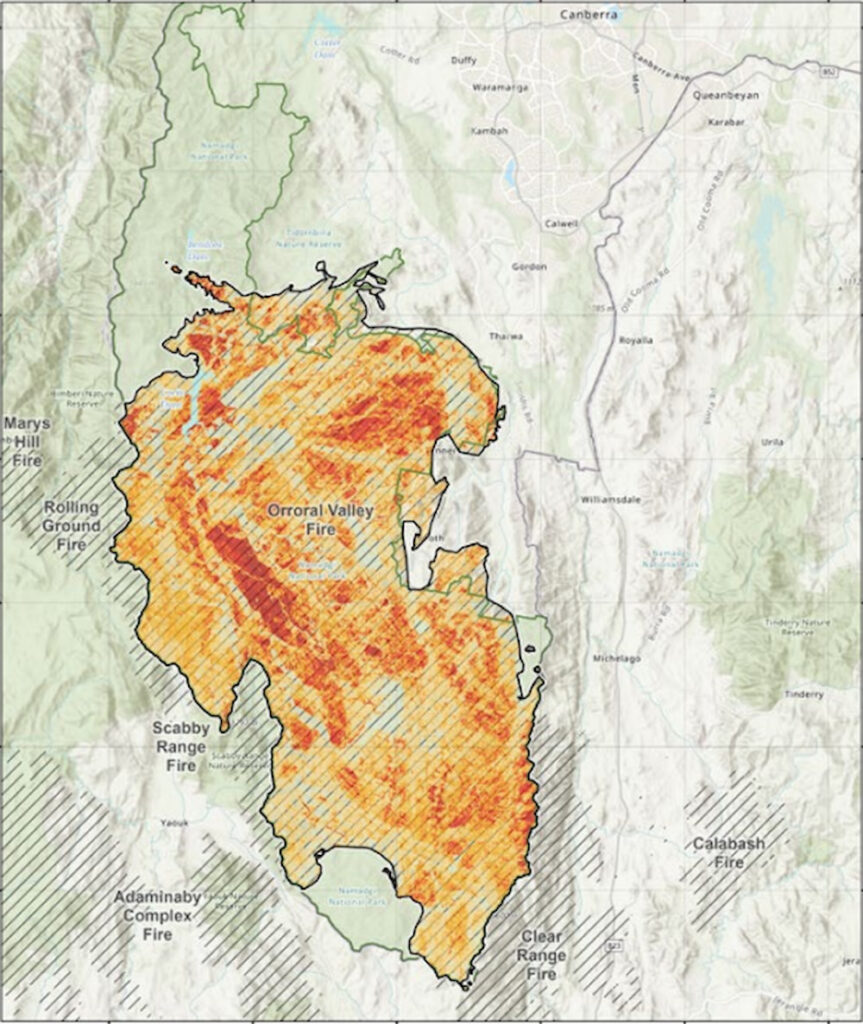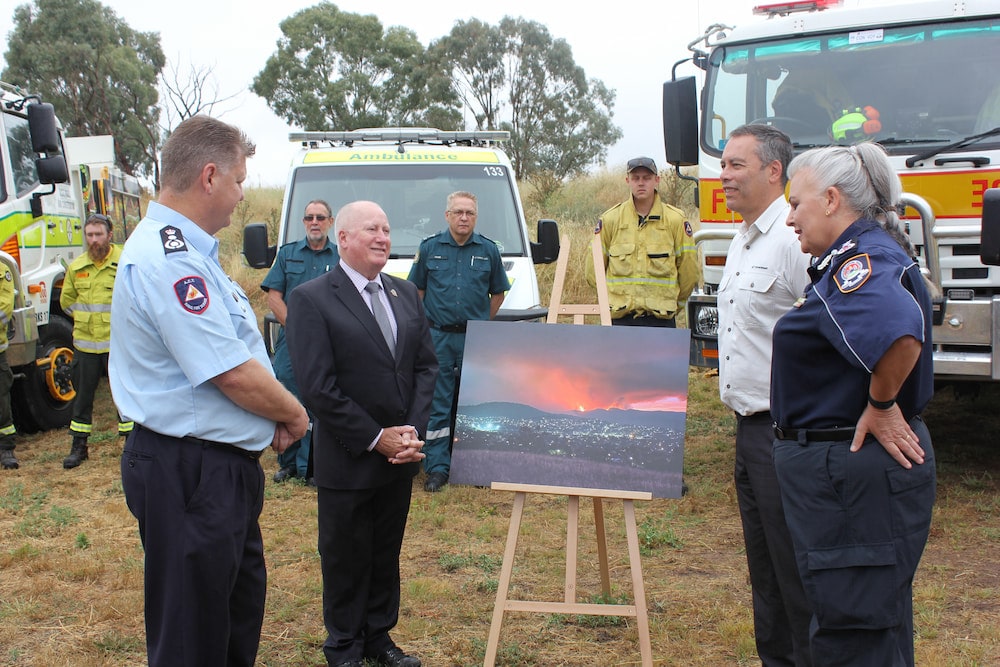Namadgi National Park and Tidbinbilla Nature Reserve are starting to recover a year after they were devastated by the Orroral Valley fire – but it will be a while before they are fully healed.
The fire started in Namadgi on 27 January 2020 – caused, the ABC later revealed, by a Defence helicopter sparking a fire in dry grassland. It was another 45 minutes before the aircraft crew notified the authorities, after they flew back to Canberra. Some have said the delay cost vital time in which the fire could have been controlled.
The fire quickly spread in record dry conditions, hot temperatures, and gusty winds to burn almost 88,000 hectares: 80% of Namadgi (82,700 ha), 22% of Tidbinbilla (1,444 ha), and 3,350 ha of rural lands – much of it already burnt in the 2003 fires. In NSW, the fire created the Clear Range bushfire that destroyed homes in Bumbalong and Colinton. It was another month before the fire was finally declared out on 27 February.
Twelve months later, Daniel Iglesias, ACT Parks and Conservation Service (ACT Parks) executive branch manager, said that Namadgi’s precious ecosystems were regenerating, helped by steady, ample rain. Many trees have survived and were resprouting; alpine meadows that were badly burnt have swiftly recovered; and fish and other aquatic plants and animals were recovering.
“Nature adapts to a fire to a certain extent; it has its recovery mechanisms, just like us humans have when we suffer disaster,” Mr Iglesias said.
Nevertheless, he said, it would be three years before the landscape was restored to what it had been. In the meantime, ACT Parks were remedying walking trails, removing dangerous trees, and controlling feral animals. He hoped to open trails and campgrounds this year.

ACT Minister for Police and Emergency Services, Mick Gentleman, and ACT Emergency Services Agency (ESA) Commissioner, Georgina Whelan, congratulated ACT ESA staff and volunteers – as well as the ACT Parks, ACT Policing, NSW Rural Fire Service, QLD Fire Service, Defence, and other ACT government agencies – on their response to the Orroral Valley fire.
Community, volunteers and emergency services personnel demonstrated extraordinary resilience, determination and teamwork to protect people, property and the environment, Mr Gentleman said. Ms Whelan praised the tireless commitment of ESA staff and volunteers who helped to keep Canberra safe.
“It hits home for all of us when an event is so close to home and puts the lives of tens of thousands at risk,” she said. “That’s something that every firefighter and every emergency responder takes personally.”
Asked whether Defence would still be involved in firefighting efforts, Ms Whelan was diplomatic. “Whilst what happened in terms of the ignition was a tragedy and very disappointing, we must be reminded that Defence also provided a tremendous amount of support to us.”
Nevertheless, she would raise questions about communication protocols to ensure a more timely response. Joint training activities this year would focus on enhancing ACT ESA and Defence’s ability to work together.
Ms Whelan said that the ESA responded swiftly to the emergency once they were notified. Fire towers identified the smoke early on; vehicles within 14 km of the fire were deployed; the Firebird 100 helicopter photographed the blaze from the sky; and firefighters performed outstandingly. Had fire threatened Canberra’s southern suburbs, residents would have been efficiently evacuated. ACT ESA would, however, improve how it communicated with its firefighters on the ground.
Since the Orroral Valley fire, Ms Whelan said, the ACT ESA has enhanced its capability, collective training, preparedness, personnel, planning and incident management strategies.
This includes recruiting specialists – fire behaviour and weather analysts, an aviation expert, and a strategic planner – within the agency; and building more helipads at the Hume aviation base, ACT Rural Fire Service chief officer Rohan Scott said.
Two months of fire season remained, Mr Scott said, and grass fires could still be a problem. He encouraged Canberrans to prepare for emergencies by completing their ESA Survival Plan.
For more news:



